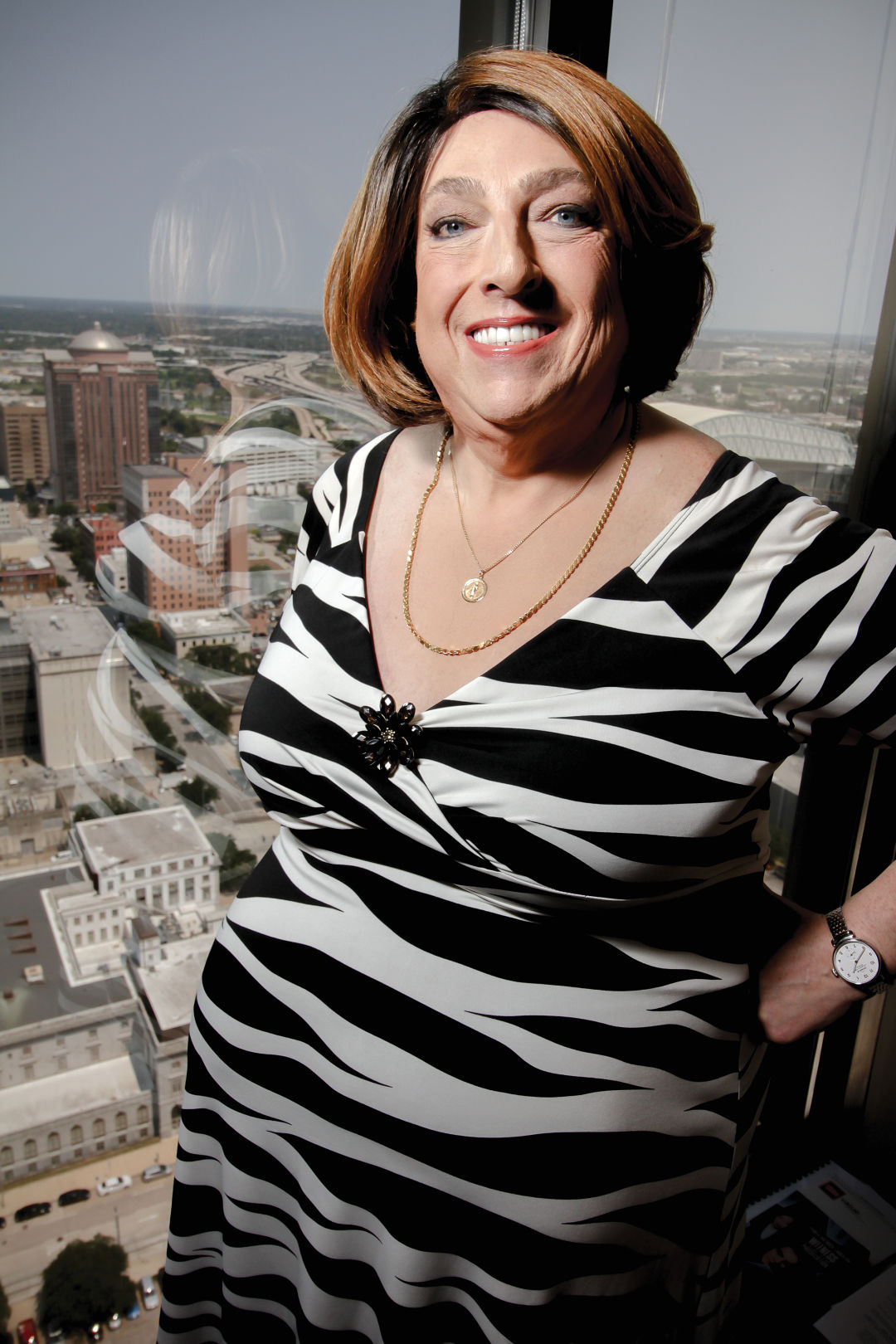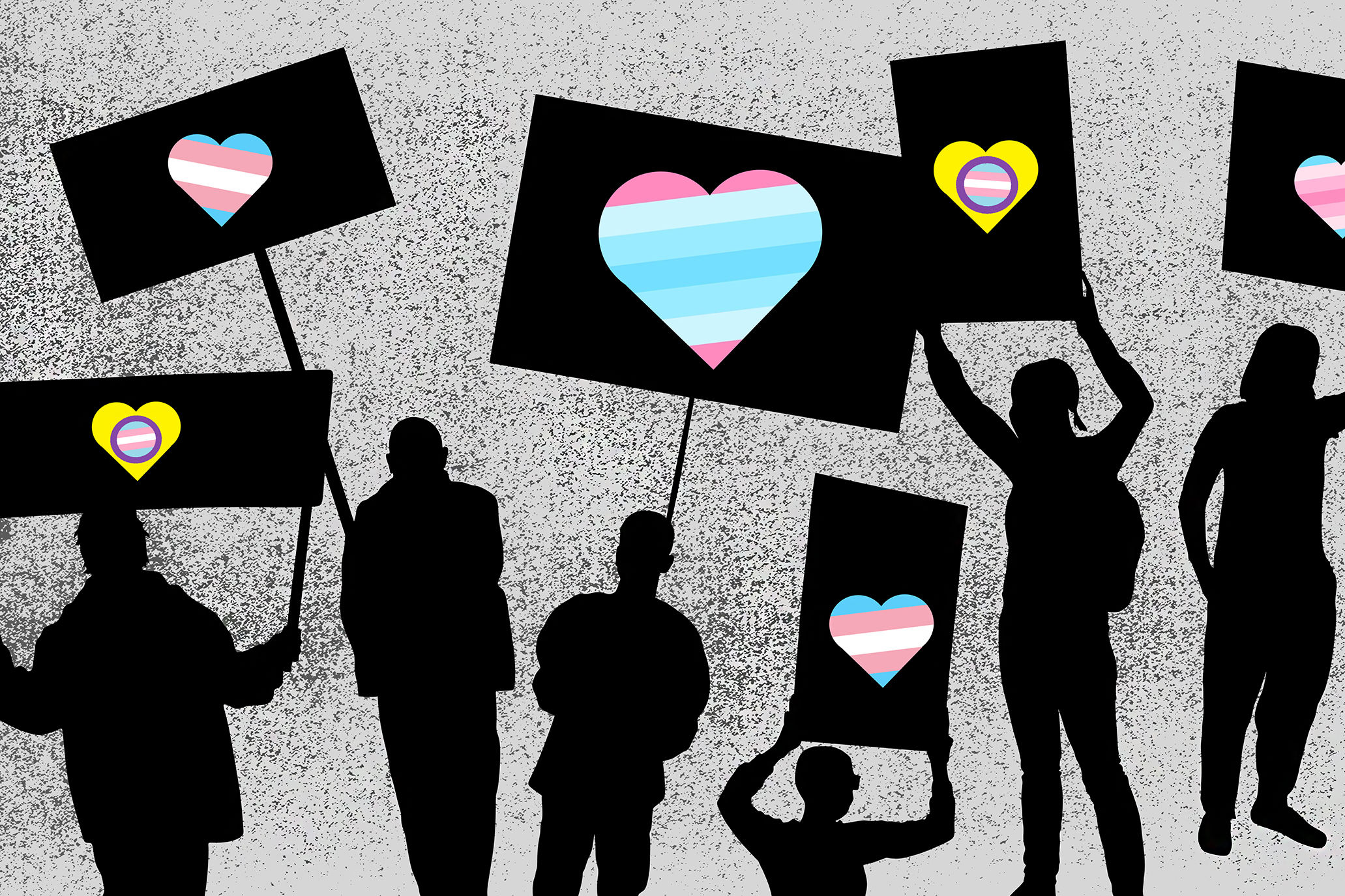How a Houston Lawyer Found Her Joy

Image: Marco Torres
This summer, a lawyer emailed Houstonia with important information about herself: “Please be advised that as of August 1, 2017, David J Healey, Senior Principal at Fish & Richardson, had a legal name change to Danielle J Healey.”
For Healey, it was a preemptive notice should she make this magazine’s annual list of Top Lawyers this December, and just one of the countless pieces of red tape the patent and antitrust litigator was slowly ticking off a daunting to-do list. She had recently announced her identity as a trans woman, meaning David was now Danielle; the middle initial no longer stood for “James” but rather “Joy”—a name chosen by Healey’s oldest friend because, after her transition, she was “so full of joy.”
When Healey went public as trans in July at a legal seminar, Texas Lawyer and Law.com picked up the story, and an influx of feedback poured in—at least 300 positive messages in the first day alone. Right after the seminar, she appeared before the Texas Senate to speak against the so-called (and defeated for now) bathroom bill that sought to limit a transgender person’s access to restrooms. The following week, she carried right on with meetings at the federal Department of Justice and filed pleas in court under her female name.
It’s not that a trans person in the courtroom is unprecedented, even in Texas; the Bayou City claims Phyllis Randolph Frye as the nation’s first openly transgender judge, appointed in 2010 by former Mayor Annise Parker. But, by Healey’s count, there are only about a dozen openly trans lawyers out of roughly 100,000 bar members spread across the state. (No organization officially tracks the number.) This scarcity underscores Healey’s desire to be the role model she never had and drives her work to ensure justice while dispelling transphobia along the way.
When we met at the patio of a strip-mall Luby’s near the Galleria—an alternate location forced by the looming threat of Hurricane Harvey—Healey pointed through the rain toward the women’s shoe store a few doors down, where she likes to shop. Her nails were beautifully manicured, painted a matte-finish mauve. She later whipped out what is possibly the most beautiful driver’s license photo ever, the newly-minted product of a momentous trip to the DPS when she fussed over her appearance with a big bag of makeup until the attendant was ready to capture the biggest, toothiest grin she could muster. That she has a female driver’s license is a miracle itself; as someone born in New York, she could change the gender marker on her birth certificate and streamline the byzantine, subjective process Texas-born trans people must navigate.
All this to say, Healey’s friend was right: Everything about her—from her appearance to her personality—radiated a delightful comfort and, yes, joy. It was all the 57-year-old could have hoped for.
“I went into this final transition saying I’m willing to lose everything I have, other than my family,” she said. “Even if I had to lose my job, if I had to lose my practice, if I had to lose my friends, if I had to lose my relatives, I can’t live as a man anymore. I just can’t do it. It’s either transition, or put a bullet in my brain. That was where I was at.”
While Healey remembers the first hints of her trans identity as early as age 4—when she began asking her mother when her penis would fall off—it took decades to slowly come to terms with it. After all, there was no internet until her mid-thirties. People like Laverne Cox had not yet appeared on the cover of Time, and Caitlyn Jenner was still living as Bruce. “I just thought I was a freak,” she recalled.
After graduating from Brown University in 1982, Healey moved to Texas for law school. She married her wife, with whom she had two daughters. But depression was a constant struggle, and, she recalled, work began to serve as a coping mechanism—she put in 300 hours a month and quite possibly missed three years of her oldest daughter’s life “literally because I was in trial.” It wasn’t until about 2004 when she first verbalized (to a therapist) that she might be trans. Those words were a turning point.
Healey started to venture out as a woman, getting lunch at Churrascos in Sugar Land with her friends. On frequent business trips to Silicon Valley, she would spend the day in court as a man but come to life each night, attending dinner parties and the theater as herself. She described that day-to-night transition in stark terms: “Literally, I went from depressed, tired, to”—she snapped her fingers—“Let’s go, I’m good! That’s how I feel every day now. My life has energy to it.”
Healey’s firm has been totally supportive of the transition, and, while it’s been difficult, she remains with her wife and close to her children. She said the arc of this experience has injected her with a profound empathy for anyone “who just had a bad run of things.” Outside her firm, she is working on a pro bono case for a woman allegedly discriminated against based on her sexual orientation and another for a gay man seeking asylum from Russia, where he could be detained, tortured or killed for his sexuality.
But she also works pro bono with “regular people”—sometimes working-class, blue-collar Republicans. With one “regular” client, Healey believes that sustained, professional contact with a trans person pulled double duty: to ensure justice, and to also dispel whatever unfounded beliefs that client may have held.
“The fact that when she was down, the only person who would help her was a trans woman who asked for nothing in return—that showed her what trans people are like,” Healey said. “They’re just like everybody else.”




